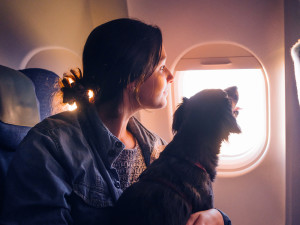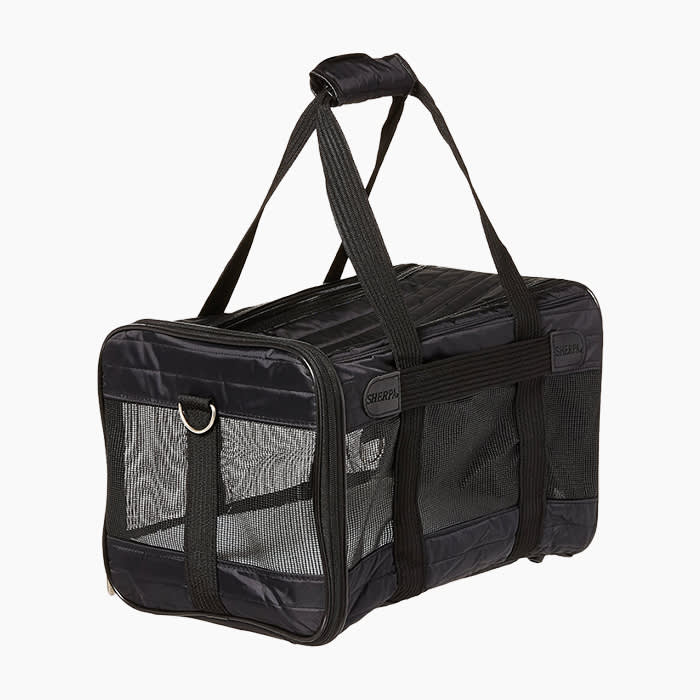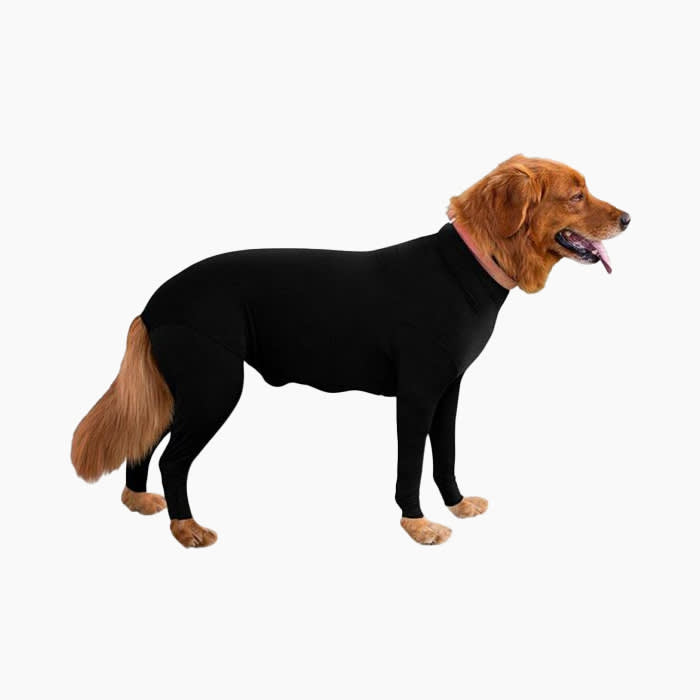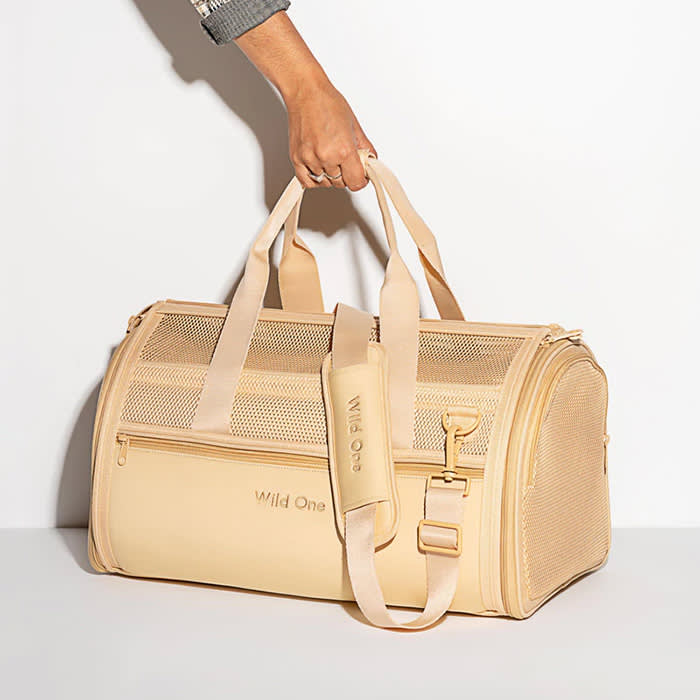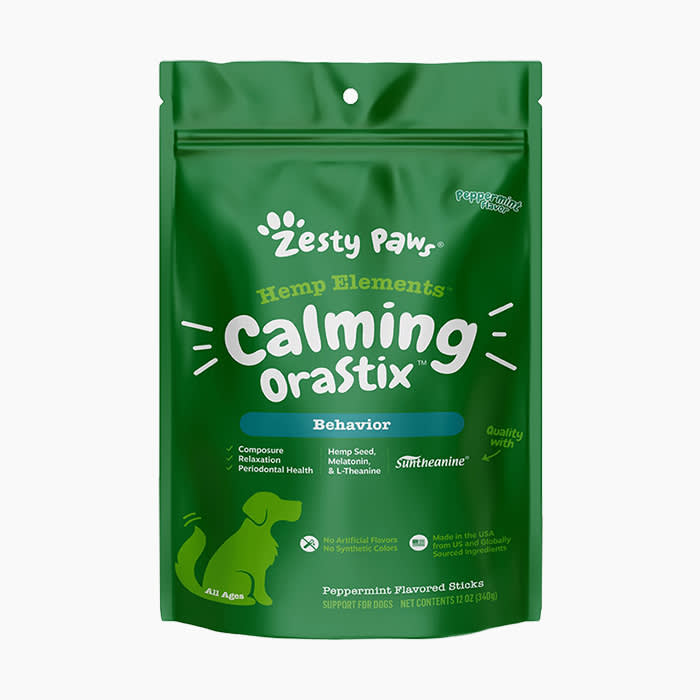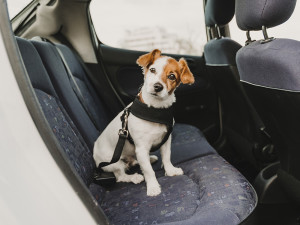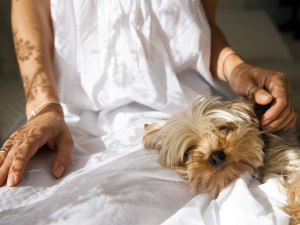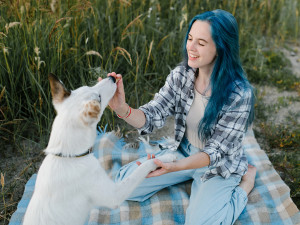6 Expert Tips to Make Flying With Your Dog as Smooth as Possible
Plus, a few products to seal the deal.
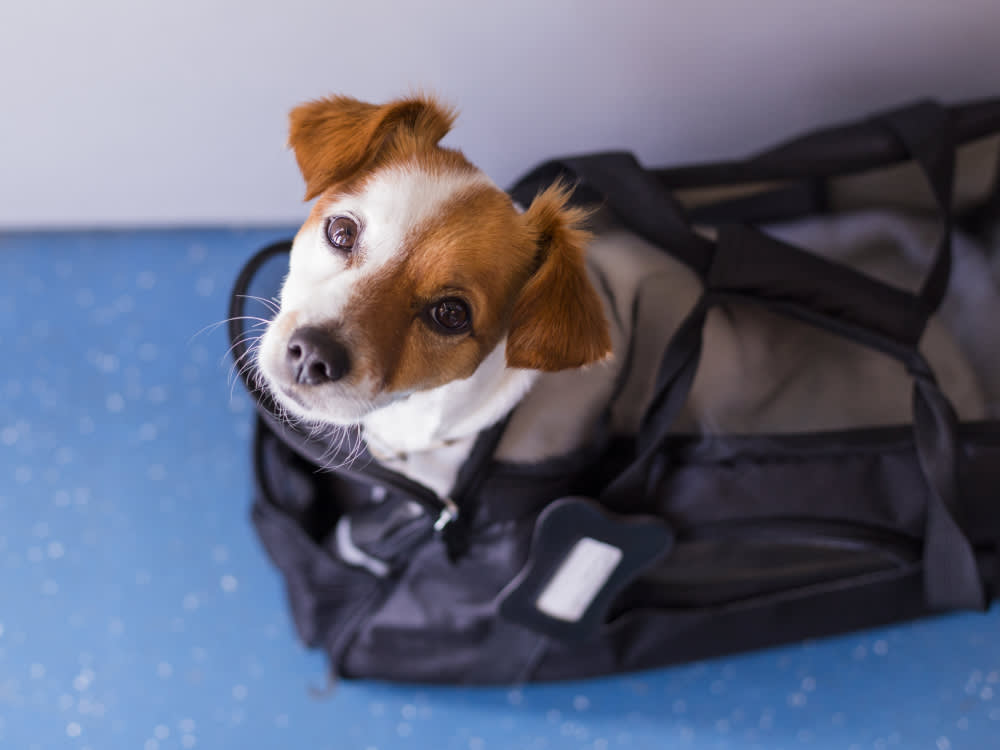
Share Article
The worst part about traveling is not having to maneuver the airport (though that does suck)—it’s leaving your pup behind and the guilt that comes along with that. Thankfully, you do have an option: You can bring you dog with you on your flight. While it sounds daunting, there are some hacks for making the flight with your favorite companion as smooth as possible, while keeping an eye on them the whole time. What’s that we hear? Big sighs of relief? Don’t worry. We’ve got you covered.
We spoke with veterinarian Dr. John Iovino to get some tips for traveling with pups who can fit in an under-seat carrier (under or around 20 pounds).
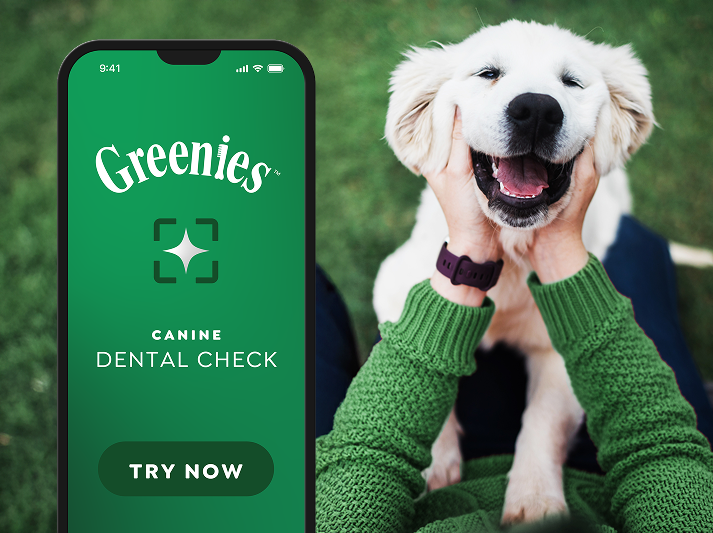
Snap a pic of your pup’s teeth, and GREENIES™ will help you spot potential signs of oral health issues.
Choose a carrier.
Carrier choice can make or break your inflight experience, and Dr. Iovino warns that the options can be overwhelming. “With so many types of carriers on the market, I can see how choosing one can be challenging,” he says. Thankfully, there are a few tricks to selecting the right one.
First up, check your specific airline’s carrier guidance to make sure that you’re getting the exact right size. “Each airline should include the dimensions they require on their website, and a good rule of thumb for the weight requirement is that the carrier plus the pet’s weight cannot exceed 20 pounds,” Dr. Iovino explains. “Knowing your pet’s weight and paying attention to how much the carrier weighs on the product is key.”
How much do you spend on your pet per year?
Look for something that your dog can move around in comfortably, so they aren’t cramped in one position during the entirety of your travels. Ideally, you can fit a small folded-up blanket or little pillow in the carrier for their comfort. Dr. Iovino recommends soft carriers designed and advertised specifically for flying.
“They have mesh walls on most sides to provide ventilation and a chance for you to see your pet to make sure everything is okay. I find them easier to position under the seat in front of you rather than using a plastic or ‘non-collapsible’ carrier,” he says. But possibly their biggest boon: “Soft carriers are easily cleanable, and they collapse down for easy storage when not being used.”
Train your dog to stay calm in a carrier.
If your pup is uneasy during car rides or can’t handle staying in a crate for very long, you should practice in the days leading up to your travel date. This practice can involve many different activities: crate-training your dog, if they’re not already, being the most important. Get your dog comfortable with staying in their crate — or preferably the specific carrier they’ll be inside on the date of travel — by easing up to the amount of time they’ll spend in the carrier day by day. For example, if your travel time will be five hours, start at a low duration (say, half an hour, depending on existing comfort levels) and work up to the amount they’ll experience on their day of travel. If you live in a city, take your pup on the subway in a carrier to simulate the experience; if you’re car-bound, do the same in the car.
Your dog doesn’t need to be their obedience school’s valedictorian in order to handle flying, but basic training will make your day of travel a lot more manageable. When planning your trip, don’t forget to consider the entire day’s worth of travel — not just the flight, but the trip to the airport, and the amount of time you’ll spend in the terminal itself.
Find a calming treat.
Your dog will certainly deserve a treat on your day of travel, and why not pick something that you think will aid them on their travel journey? Something with CBD or melatonin will help lower their anxiety levels.
Whatever you choose, be sure to have your dog sample it ahead of the day of travel — you never know how a new food could affect your dog’s stomach, and it’s a lot easier to deal with a queasy stomach when you’re not 36,000 feet in the air. And if your trip is longer than six hours or so, pack a baggie of extra kibble for a quick meal when you land.
Pack an additional carry-on.
In most cases, your pet’s carrier counts as one of the two carry-ons allotted with your booking. Because of this, you have to be strategic with the other carrier you bring on the flight. This largely depends on your own personal needs for in-flight comfort.
If you’re someone who likes tons of options (iPad, book, neck pillow... what have you), you’re probably best checking a bag with all of the other belongings you’re bringing on your trip, rather than trying to get away with a rolling case plus the carrier. If you require less to stay entertained during a flight, it’s possible to fit your essentials in your own pockets and everything your dog will need inside the carrier pockets.
Don’t forget your pet’s vet records.
You will be asked to show proof of vaccines when you check in, so remember to have your dog’s vaccination history handy, plus any other important paperwork, such as a rabies certificate and your vet’s contact info, Dr. Iovino says. “When flying domestic, a general health certificate is required and is done within ten days of your departure date. The requirement to obtain the general health certificate would be an exam done by a USDA accredited veterinarian in your state,” he adds. “It’s also essential to research the particular state’s entry requirements before traveling since all states have different rules.”
And while you may be focused on stocking up on calming chews and tinctures, remember to pack any medication your pet may need — it’s especially easy to forget if you need to administer it the morning of your trip when you’re rushing around.
Locate the terminal’s pet-relief area.
Airport pet-relief areas are the traveling canine’s best friend. While the quality of pet relief areas vary from airport to airport, you’re sure to find someplace where your dog can stretch their legs and take a bathroom break, pre-boarding. Don’t forget to pack poop bags and a leash so your pup doesn’t make a run for it as soon as they’re out of the carrier.
During the flight
Generally speaking, you’re not allowed to to remove your pooch from their carrier once you’ve boarded the flight, so make sure your dog is set up for comfort with their favorite toy (if it fits in the carrier) to keep them company. Though they can’t come out, you can reach into the carrier to give them a treat or a pet throughout the flight. Below, a few essentials for flying with with your dog.
Btw, our editors (and their pets) picked out these products. They’re always in stock at the time we publish, but there’s a chance they’ll sell out. If you do buy through our links, we may earn a commission. (We’ve got a lot of toys to buy over here, you know?)
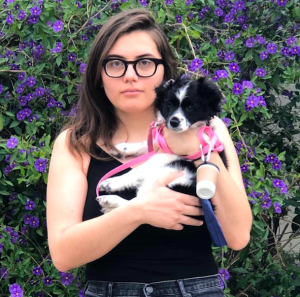
Rachel Davies
Rachel Davies is a writer who has written for numerous publications including Vox, Wall Street Journal, and Architectural Digest and the parent of a beautiful Cocker Spaniel mix named Thea.
Related articles
![Dog seat-belted in a car]()
18 of the Best Car Travel Gear for Dogs
All the essentials you need to hit the road with your co-pilot, from dog seatbelts to crash-tested carriers.
![Person in a white dress with a calm tan dog leaning on their lap]()
How Dog-Appeasing Pheromones Can Help Dogs Relax
Hey, man. It’s all about those chemical messengers. See how Adaptil can help your pup.
![Greyhound dog lying on top of couch looking out of a window]()
8 Calming Products That Help My Dog’s Anxiety
Compression vests, interactive toys, and pheromone sprays will be game-changers this Fourth of July.
![Hand giving a treat to a blissful and calm looking dog]()
Does Your Pet Want in On Your CBD?
6 of the best pet CBD products on the market — if it’s the right choice for your pet.
![Pet parent comforting anxious dog by holding their paw]()
How to Help an Anxious Dog
Easy ways to calm your pup’s nerves.
![girl with blue hair starting puppy training with white dog]()
Puppy Training 101: How to Train a Puppy
You gotta start somewhere.
